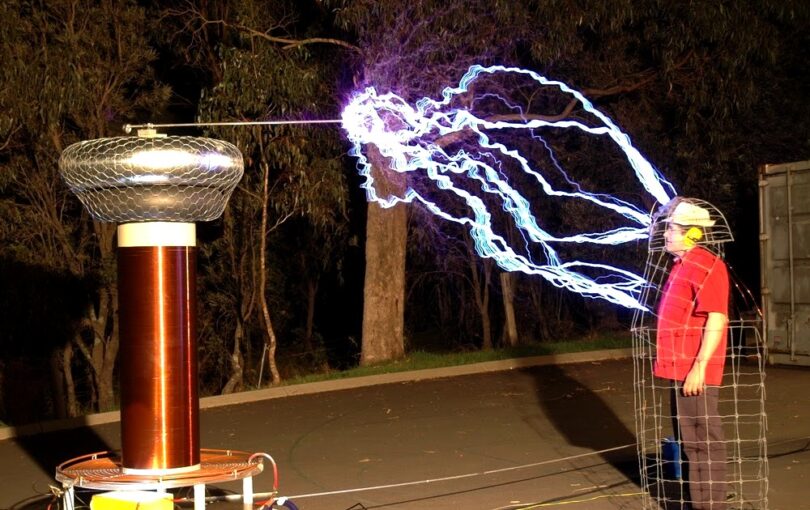We are all surrounded by electromagnetic radiation. The unwanted signals produced by electronic devices often create a disturbance, and that’s where Faraday cages come in. The great 19th-century scientist Michael Faraday studied earlier scientists such as Benjamin Franklin and invented the Faraday Cage. So, what is a Faraday cage, and how it works?
Now, you may ask how it works. A Faraday cage is a metallic enclosure that prevents an electromagnetic field (EM field) from entering or escaping. It is a conductive cage, known by other names like Faraday shields, RF cages, or EMF cages. This cage is designed to protect the inside from external electric fields and external electromagnetic radiation. It cancels out electric charges or radiation within the cage’s interior.

During his research, Michael Faraday discovered that electromagnetic waves naturally flow around the surface of conductive materials, not through them. For instance, if a car is struck by lightning during a thunderstorm, the car’s metal frame acts as a Faraday cage and draws the electricity away from the passengers inside. During his experiment, he wrapped a room in metal foil, placed an electroscope inside the room to measure electric charges, and then applied electrical leads outside.
To build a Faraday cage, the conductive material is required. Conductive materials like metals allow electricity to pass through them. Conductive material is meant to protect what’s inside the enclosure from electricity. It is also lined with a non-conductive layer, so the cell has a conductive layer on the outside and a non-conductive layer on the inside.
Uses of Faraday Cage
The Faraday cage has become quite popular and used in our everyday lives. It is used in places and applications where stray EM fields must be kept out. A heavy-duty Faraday cage can protect anything inside against direct electrical charges.
From esoteric lab settings to common products, Faraday cages are used for a variety of purposes. The most common example of a Faraday cage is microwave ovens that reverse the effect and trap waves within a cell for cooking. Likewise, many other electronics also use Faraday cages to block out radio frequencies and electromagnetic noise disturbances that could impair their proper functioning. Power utility linemen who work on high-voltage power lines also wear specially-made suits to reduce the risk of electrocution.
You fly safely in airplanes through storm clouds because the plane’s cockpits and compartments are protected by metallic materials that act as Faraday shields. Moreover, hospital MRI (magnetic resonance scanning) rooms are also shielded to prevent stray electromagnetic fields from affecting a patient’s diagnostic images. The concept of the Faraday cage also protects vital telecommunications equipment from lightning strikes and other electromagnetic interference. It is also used to design a shielded room to block out eavesdropping technologies to discuss sensitive matters.





